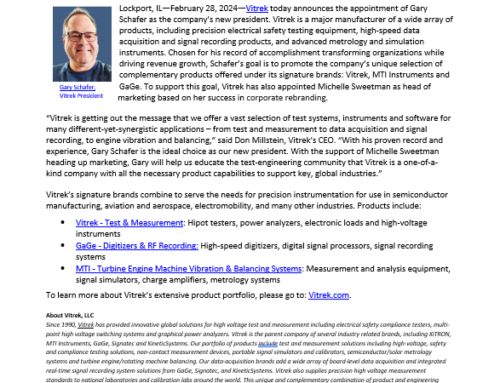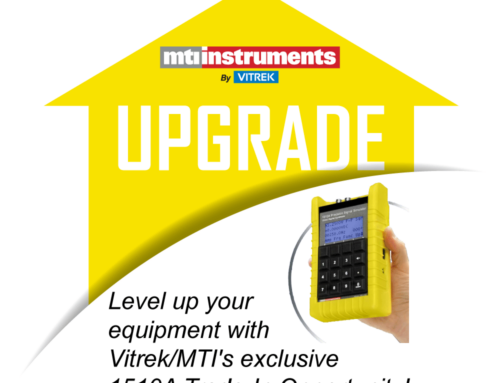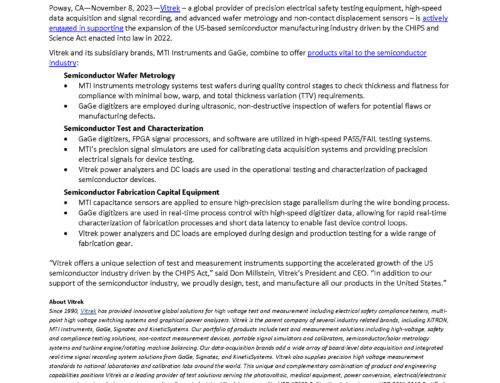 MTI Instruments has released an application note that explains how to use capacitance to measure the thickness of the lithium battery plates in electric vehicles (EVs). Manufacturers need to check these plates for thickness before calendaring them together to ensure that the overall battery diameter is within specifications. In EV batteries, lithium ion compounds are applied to either a copper plate substrate (cathode) or an aluminum substrate (anode plate). These conductive plates are separated by a dielectric.
MTI Instruments has released an application note that explains how to use capacitance to measure the thickness of the lithium battery plates in electric vehicles (EVs). Manufacturers need to check these plates for thickness before calendaring them together to ensure that the overall battery diameter is within specifications. In EV batteries, lithium ion compounds are applied to either a copper plate substrate (cathode) or an aluminum substrate (anode plate). These conductive plates are separated by a dielectric.
MTI Instruments, a global supplier of precision measurement solutions, makes capacitance sensors that can measure thicknesses materials down to nanometers. Moreover, MTI supplies capacitive sensors with a range to resolution of greater than 10,000:1 – and sometimes even better. That’s important for applications like measuring EV battery plates, which are approximately .004 to.008 inch thick (.1016 to .2032 mm). As MTI’s application note explains, capacitance-based probes provide two ways to make these thickness measurements.
Two Methods, One System
Both methods use MTI’s Digital Accumeasure, a non-contact measurement system that converts a capacitive electric field measurement (displacement) directly into a 24-bit digital reading for precise thickness measurements. The first method uses the MTI Digital Accumeasure with two single-ended probes if the substrates can be grounded, or two push-pull probes if the substrate cannot be grounded. With both types of probes, the substrate must remain taught between the rollers and free of vibration.
The second method for measuring EV battery plate thickness requires two standard capacitance probes and a grounded roller. The two-channel MTI Digital Accumeasure uses the first probe and Channel 1 to measure the spindle roller runout. The second probe and Channel 2 measures the top height of the battery substrate. The difference between these two measurements equals the substrate thickness. MTI’s Digital Accumeasure and a standard capacitance probe can also be used to measure the thickness of the dielectric separator.


